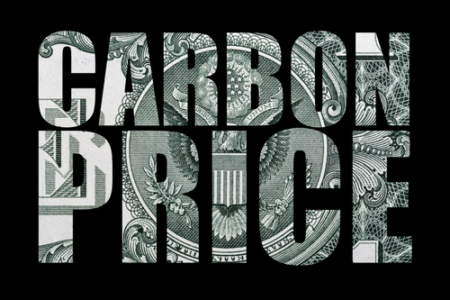March 4, 2020 – What is the right price to put on carbon? In Canada, the federal government’s carbon policy this year values a metric ton of carbon at $30 CDN ($22.40 USD). For oil majors north of the 49th parallel, is that amount enough to alter operations? Hardly.
What, however, does it do to domestic consumption of fossil fuel products? Let’s use gasoline at the pump as an example. The added carbon levy translates to around $0.07 per liter or $0.27 per gallon. Would that cause drivers to pause when considering a choice between using public transit alternatives or their personal vehicles? Again the answer is hardly because that’s well within the normal swings associated with gasoline pricing in the market over the past ten to fifteen years.
The Canadian government plans to raise its per ton carbon levy to $40 CDN ($30 USD) in 2021, and $50 CDN ($37.50 USD) in 2022. It has also announced that it intends to consult with the industry, provinces, territories and Canada’s native peoples about further increases beyond 2022. The carbon pricing policy’s purpose was to help the country achieve its Paris Climate Agreement commitments to reduce greenhouse gas (GHG) emissions by 30% below 2005 levels in 2030. On its own carbon pricing at the current pace of increase is unlikely to help the country achieve the targeted reduction by the end of the decade.
What is climate change costing Canadians today? According to the Insurance Bureau of Canada, extreme weather events in 2018 impacted the economy to the tune of $1 billion, up from an average of $400 million annually in previous decades.
Morgan Stanley, the U.S. investment banker, has done a global calculation for the cost of climate change over the last three years at a total of 650 billion USD, or more than one-quarter percent of global gross domestic product. The banker projects the number to grow to 54 trillion USD by 2040.
So using the market mechanism of pricing carbon as the sole means of reducing GHGs in the atmosphere, what would be the right price to put on GHGs to alter our use of fossil fuels?
In a 2018 study done at UC San Diego, it concluded that carbon emissions’ social cost amounted to approximately $417 per metric ton and that the cost to the United States in terms of damage to the economy came out at about $50 per ton. In the study’s conclusions, it suggested a U.S.-wide carbon price starting at $40 USD per ton to begin altering how Americans consume fossil fuels. That’s equivalent to about $50 CDN per ton, the price that Canada will levy on carbon emissions by 2022.
Capturing carbon has spawned a number of technology solutions that are being used to do direct-air capture and storage, capture from smokestack emissions at coal-fired power plants, and oil-field and oil-sands capture at point-of-production. Most of these projects need carbon to be priced much higher than it is today to scale up the capture and reuse technology to go global.
A market based on a carbon price starting at 100 USD per ton represents a 4 trillion USD opportunity for carbon capture technology states Dr. Wal Van Lierop Executive Chairman and Founding Partner of Chrysalix Venture Capital, a venture capital fund focused on resource-intensive industries, and an investor in Svante, a Saskatchewan-based carbon capture company. He describes the break-even point for a carbon capture marketplace is minimally 50 USD to cover the cost of capture, transportation, and storage. The venture capital investment in Svante has helped the company to build a proof-of-concept that currently is capturing 10,000 tons of carbon dioxide (CO2) annually from an industrial natural gas boiler. Svante will soon be installed in Colorado at a cement plant where it will capture up to 750,000 tons of the gas to store in a depleted oil field.
Another carbon capture venture, Carbon Engineering, also out of Canada, has developed direct air capture of CO2. It has piloted a project in British Columbia and will soon have an industrial-scale deployment located in the Permian Basin (western Texas and New Mexico) where it will capture 1 million tons of the gas directly from the air, and permanently store it in depleted oil reservoirs. Carbon Engineering recently stated that it has been able to reduce its costs to under 100 USD per ton which would suggest that carbon needs to be priced at well over that number to make the industry viable.









